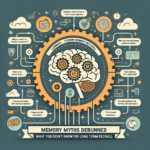
Introduction
When it comes to scientific research, data analysis, and decision-making, hypothesis testing holds a critical place. It’s the backbone of validating theories and ensuring that informed choices are grounded in evidence. However, the process isn’t as straightforward as it seems. Many researchers and practitioners fall prey to common pitfalls that can compromise the integrity of their findings. This article presents an insightful exploration of the 7 common mistakes in hypothesis testing and how to avoid them, equipping you with the knowledge to enhance your statistical practices and elevate your research quality.
Understanding Hypothesis Testing
Before diving into the mistakes, let’s clarify what hypothesis testing involves. At its core, hypothesis testing is a statistical method used to make judgments about a population based on sample data. The process includes forming a null hypothesis (H0) suggesting no effect or difference, and an alternative hypothesis (H1) positing that an effect does exist. By analyzing sample data, researchers determine whether to reject the null hypothesis in favor of the alternative.
So, why is it crucial to get this process right? The implications of erroneous testing can lead to false conclusions, wasted resources, and flawed policy decisions. Let’s explore the 7 common mistakes in hypothesis testing and how to avoid them.
Mistake #1: Misunderstanding the Null Hypothesis
Many researchers confuse the null hypothesis with their research hypothesis. The null hypothesis serves as a baseline, asserting that there is no effect or difference. Misunderstanding this can lead to rejected hypotheses that shouldn’t be rejected.
How to Avoid This Mistake:
Ensure a clear distinction between the null and alternative hypotheses. Take time to draft the hypotheses before beginning your analysis, and verify that your null hypothesis accurately reflects a state of no effect.
Mistake #2: Ignoring Type I and Type II Errors
Type I errors (false positives) and Type II errors (false negatives) are key concepts in hypothesis testing. A common mistake is underestimating the significance of these errors. Failing to account for them can skew the results and misinform conclusions.
How to Avoid This Mistake:
Establish a threshold (alpha level) before conducting tests to control the frequency of Type I errors. Similarly, work to calculate the power of your test to minimize the risk of Type II errors. Awareness of these errors will enhance the robustness of your conclusions.
Case Study Analysis: Medical Trials
In a medical trial testing a new drug, researchers found that their initial analysis rejected the null hypothesis, indicating a significant effect. However, they failed to calculate the power of their test, ultimately leading to a Type II error when subsequent larger trials showed that the drug had no significant effect.
Mistake #3: Overlooking Sample Size Determination
A common yet critical mistake in hypothesis testing is neglecting to calculate an appropriate sample size. Too small a sample can lead to inaccurate results, whereas an excessively large sample might show statistical significance that lacks practical importance.
How to Avoid This Mistake:
Perform a sample size calculation prior to your study. Consider the expected effect size, alpha, and power to determine the optimal sample size. Utilize statistical software to assist you in this process.
Mistake #4: Failing to Consider the Assumptions of Statistical Tests
Hypothesis tests are built on specific assumptions about the datasets being analyzed. When these assumptions are violated, the results can be invalid. For example, using a t-test assumes that data is normally distributed; if this is not the case, conclusions may be misleading.
How to Avoid This Mistake:
Conduct preliminary data analysis to check for normality, homogeneity, and other key assumptions. If assumptions are not met, consider transforming your data or using non-parametric tests.
Table: Sample Size Calculation
| Desired Power | Effect Size | Alpha Level | Recommended Sample Size |
|---|---|---|---|
| 0.80 | 0.5 | 0.05 | 64 |
| 0.90 | 0.3 | 0.05 | 102 |
| 0.80 | 0.8 | 0.01 | 205 |
Mistake #5: Relying Solely on P-values
P-values are a popular statistic in hypothesis testing, but relying solely on them can obscure realities. A low p-value does not imply practical significance or causation; it indicates only that the observed data would be unlikely under the null hypothesis.
How to Avoid This Mistake:
Accompany p-values with effect size measures and confidence intervals. This holistic approach provides a fuller picture of the data and prevents the undue emphasis on arbitrary p-value thresholds.
Mistake #6: Not Reporting Confidence Intervals
Failing to report confidence intervals alongside hypothesis testing can leave readers without vital context. Confidence intervals provide a range of plausible values for the population parameter and enhance interpretability of results.
How to Avoid This Mistake:
Always report confidence intervals as part of your results. Highlight both the statistical significance and the confidence intervals to give a clearer picture of your findings.
Mistake #7: Neglecting Replication
Lastly, a serious oversight in hypothesis testing is the neglect of replication. Relying on a single study can lead to overconfident conclusions unless research findings are replicated across multiple studies or in different settings.
How to Avoid This Mistake:
Advocate for and participate in replication studies. Share your data and methodologies to enable others to verify your results. A commitment to replication strengthens the scientific foundations of your work.
Conclusion
By understanding and addressing the 7 common mistakes in hypothesis testing and how to avoid them, researchers can enhance the reliability of their findings and foster greater confidence in their conclusions. Each mistake presents an opportunity for growth and improved practices in statistical analysis, creating a ripple effect across fields that rely on rigorous data interpretation.
As you delve deeper into research, strive to embrace these insights. Avoiding these common mistakes not only sharpens your analytical skills but also ensures that your findings contribute significantly to scientific knowledge.
FAQs
1. What is a Type I error?
A Type I error occurs when a null hypothesis is incorrectly rejected, indicating a false positive result.
2. What is the purpose of the null hypothesis?
The null hypothesis serves as a starting point for statistical testing, stating that there is no effect or difference.
3. How can I determine the right sample size for my study?
Use software for power analysis to calculate the sample size based on expected effect size, desired power, and alpha level.
4. What are effect sizes?
Effect sizes measure the strength of the relationship between variables, providing meaningful context beyond p-values.
5. Why is replication important in research?
Replication allows for verification of findings, strengthening the validity and reliability of research conclusions.
Incorporating these principles into your research process will not only refine your testing methodology but also enhance the credibility and impact of your findings. Aim for rigor, clarity, and responsibility in the age of data-driven decision-making.
















